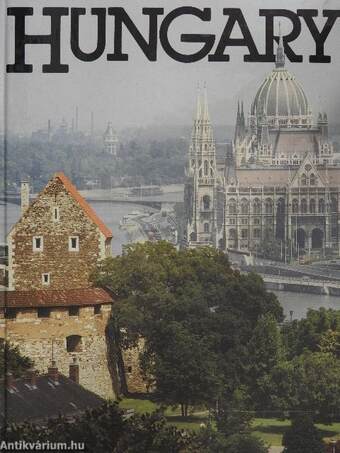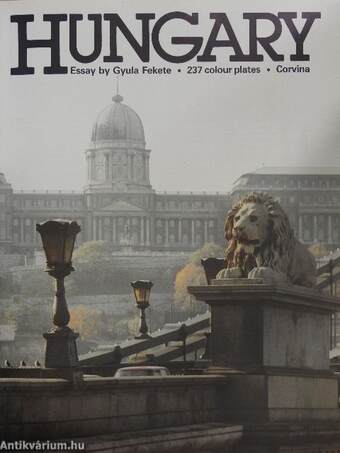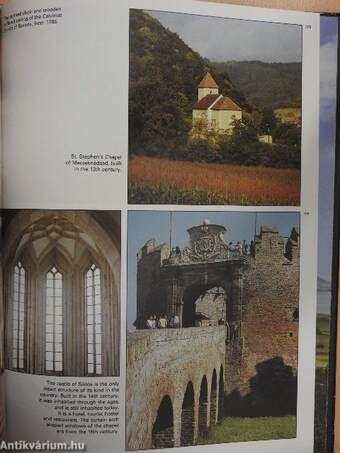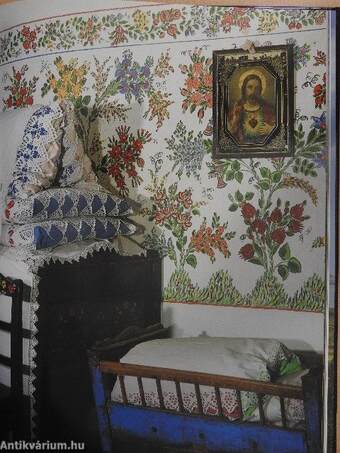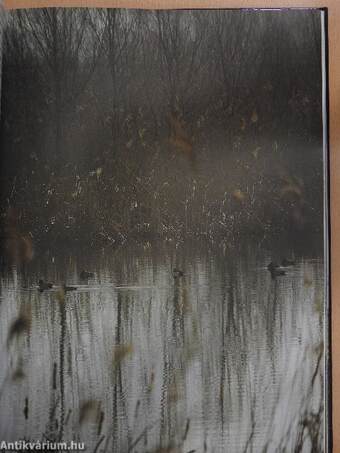1.067.669
kiadvánnyal nyújtjuk Magyarország legnagyobb antikvár könyv-kínálatát

VISSZA
A TETEJÉRE
JAVASLATOKÉszre-
vételek
Hungary
| Kiadó: | Corvina Kiadó |
|---|---|
| Kiadás helye: | Budapest |
| Kiadás éve: | |
| Kötés típusa: | Fűzött kemény papírkötés |
| Oldalszám: | 237 oldal |
| Sorozatcím: | |
| Kötetszám: | |
| Nyelv: | Angol |
| Méret: | 28 cm x 21 cm |
| ISBN: | 963-13-3829-0 |
| Megjegyzés: | Színes fotókkal illusztrált. További fotósok a könyvben. |
naponta értesítjük a beérkező friss
kiadványokról
naponta értesítjük a beérkező friss
kiadványokról
Előszó
! MII
^mMmim Y m ^>1
hmk 1
ungary is a country of encounters, a country of conflicts. Her geographical situation has almost predestined the land and the peoples who settled here to this fate.... Tovább
Előszó
! MII
^mMmim Y m ^>1
hmk 1
ungary is a country of encounters, a country of conflicts. Her geographical situation has almost predestined the land and the peoples who settled here to this fate. In this land, even the forces of nature clash and fight for hegemony. From the northwest, the oceanic air currents break into the Carpathian Basin, taking a roundabout way because of the Alps; those of the Mediterranean arrive from the south and the continental influences from east or southeast. Now one wins, now the other—the Hungarian meteorologist can never be sure of himself. None of these influences can conquer the land for good, and none of them withdraws defeated for good; the surrounding climatic zones have been struggling for thousands of years for possession of the Carpathian Basin, each from its own position of strength. Hungary is a historical crossway, too. Here, the highroads of many peoples meet. Today's highways and the lines of the twenty express trains that cross Budapest can be traced back two thousand years. The two important transcontinental-intercontinental roads of the Roman age, the Silk Road, which connected the West and the East, and the north-to-south Amber Road which connected Italy and the Baltic, met in Transdanubia.
Yet not only roads that connect peoples passed through this land but also fronts that separate peoples, and this also for thousands of years: at least since the watch-towers were built along the limes of the Roman Empire to hold back the incessant, formidable attacks of barbaric tribes along the Danube.
One can hardly count how many times the region of the middle course of the Danube has been
the battlefield of East and West; how many times the Romans, Huns, Avars, Magyars, Mongols, Turks, Germanic and Slavic peoples—or if you prefer, civilized and barbaric, pagan and Christian, Catholic and Protestant, revolutionary and anti-revolutionary, Magyar and Magyar—have clashed on the banks of the Danube. The land has been inhabited since ancient times. Traces of one of the oldest European settlements, estimated to be half a million years old, were found in the Vértes mountains in Transdanubia. Primitive man dwelt in the caves of its karstic regions; then came the thousands of years of nomadic tribes. But no really significant culture had developed until the Roman conquest. Part of the territory of Hungary then became a province of the Roman Empire under the name Pannónia. Afterwards, the waves of invaders swept away the province of Pannónia, together with the traces of the Sarmatians, Gepids and Celts; Huns, Ostrogoths, Longobards, Avars chased each other across the land, Slavic tribes settled down here, and as long as the Frankish Empire remained strong, incursions from the west also reached the land.
The Magyar Conquest—so we call the last years of the ninth century when the Magyar confederacy of tribes, with an army of 108 families, invaded the Carpathian Basin. But the most difficult undertaking was yet to come—permanent settlement on this draughty land to establish an independent state.
The flow of peoples from the East continued: the Cumans broke in, then Mongolian hordes raided the country, killing and enslaving its inhabitants. Those who were lucky enough to Vissza
Fülszöveg
For the West, Hungary is an Eastern country, for the East, it is more or less a Western one. In reality we are neither. Or if you like, we are both at the same time. Hungary is a historical crossway too, where the highroads of many peoples meet. Yet not only roads that connect people passed through this land but also fronts that separate them. This land has been inhabited since ancient times — and for a thousand years has been the home of the Magyars.
Témakörök
- Idegennyelv > Idegennyelvű könyvek > Angol > Művészetek > Fotóművészet
- Idegennyelv > Idegennyelvű könyvek > Angol > Helytörténet
- Helytörténet > Magyarország > Egyéb
- Helytörténet > Honismeret > Országos
- Művészetek > Fotóművészet > Albumok > Magyar > Egyéb
- Művészetek > Fotóművészet > Albumok > Tematikus
- Művészetek > Fotóművészet > Idegen nyelv > Angol
- Művészetek > Fotóművészet > Témái > Egyéb



